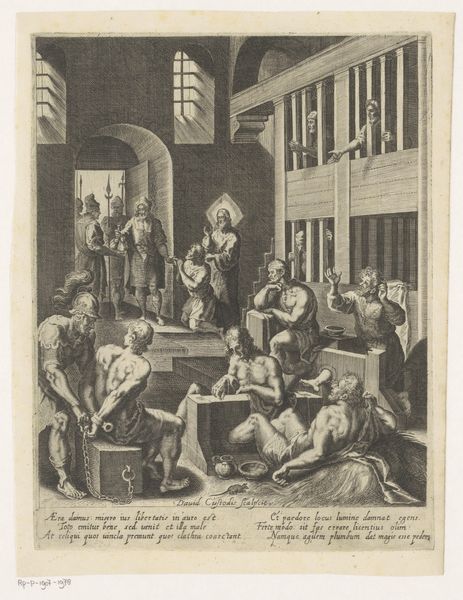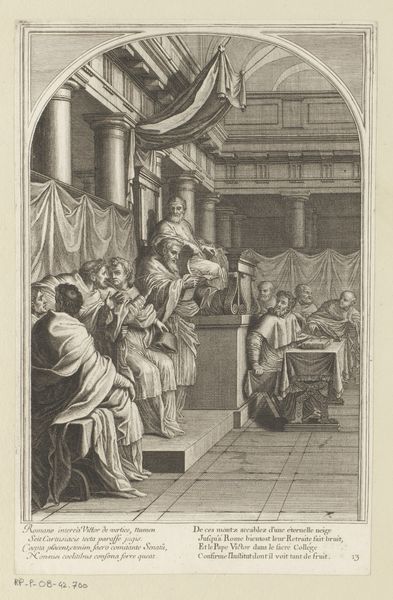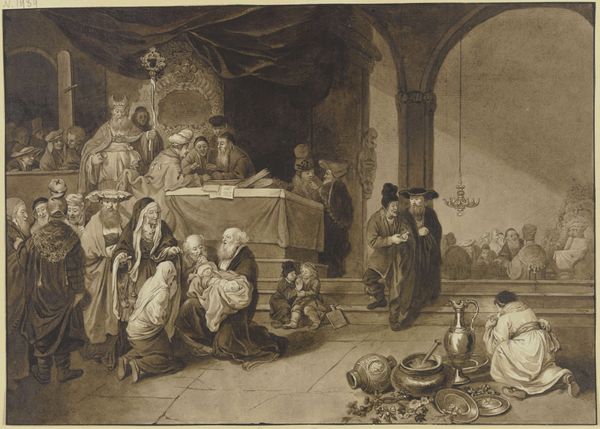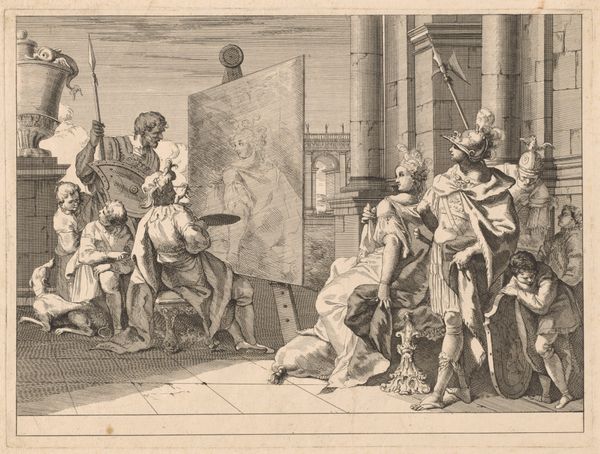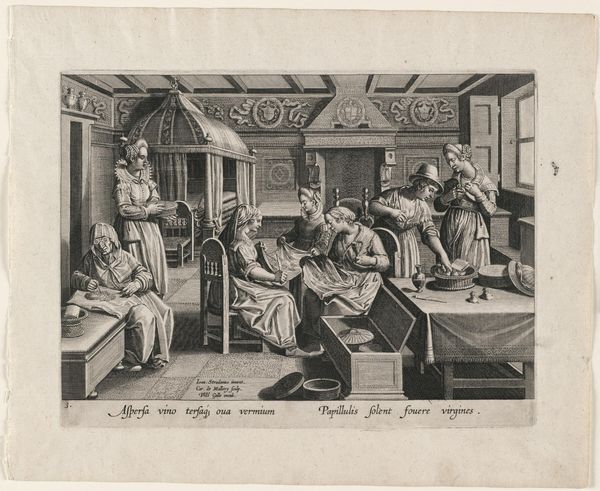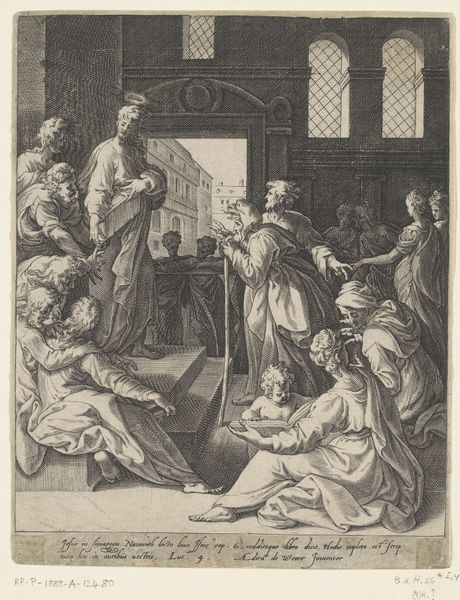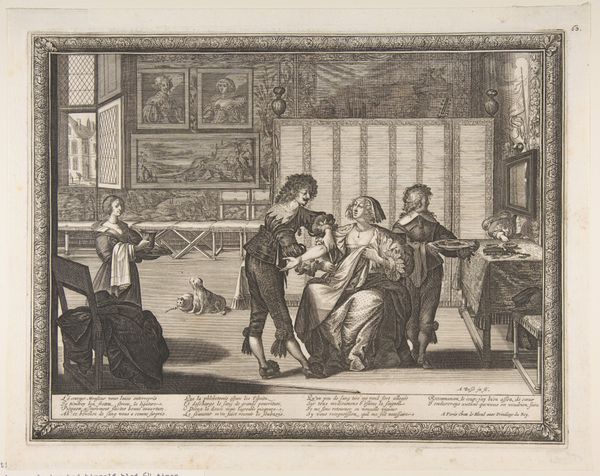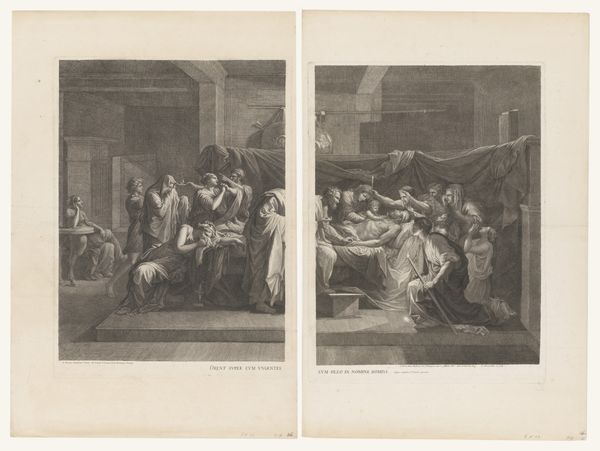
print, engraving
#
narrative-art
# print
#
old engraving style
#
line
#
history-painting
#
academic-art
#
engraving
Dimensions: height 249 mm, width 349 mm
Copyright: Rijks Museum: Open Domain
Curator: Here we have Ignace-Joseph de Claussin's 1807 engraving, "Roeping van Matteüs," held here at the Rijksmuseum. Editor: It’s…densely packed, isn't it? So much is going on within the composition, it feels almost claustrophobic. The stark lines of the engraving, though precise, add to the seriousness of the scene. Curator: Indeed. Claussin, working in the academic style, presents this narrative art with an emphasis on line and detail. What intrigues me is the print medium itself; engravings like these were quite reproducible and were important in circulating narratives throughout society. Who was seeing this and how did their context shape reception? Editor: Well, consider the act of reproduction—each engraving involves a craftsperson meticulously transferring an image. Each pull, each print becomes part of the chain of production and consumption. Were there workshops, guilds, and established social structures overseeing this type of craft production? Curator: Absolutely. The art world operated very differently then; it's easy to overlook how patronage, class, and politics influenced both the creation and the spread of artworks like this one. Prints allowed wider segments of society to have access to religious stories or images that would otherwise remain in aristocratic and ecclesiastical circles. Editor: This act of dissemination challenges notions of authorship. The narrative and visual rhetoric become accessible to wider audiences. The image becomes a tool—or weapon, depending on one's interpretation. Curator: I agree. The role of museums themselves contributes to this process, framing certain interpretations and histories over others. Take another look. Does that change anything? Editor: Now that you mention museums, I am very conscious of being framed in that context. Suddenly I can understand how the themes within can become instruments of power dynamics. Curator: Well, examining artwork like this engraving allows us to see the many layers of factors involved with artistic representation and distribution during the early 19th century. Editor: I came away with a clearer picture, quite literally, of how this particular piece serves as a physical embodiment of various production factors, accessible throughout society at various levels.
Comments
No comments
Be the first to comment and join the conversation on the ultimate creative platform.

